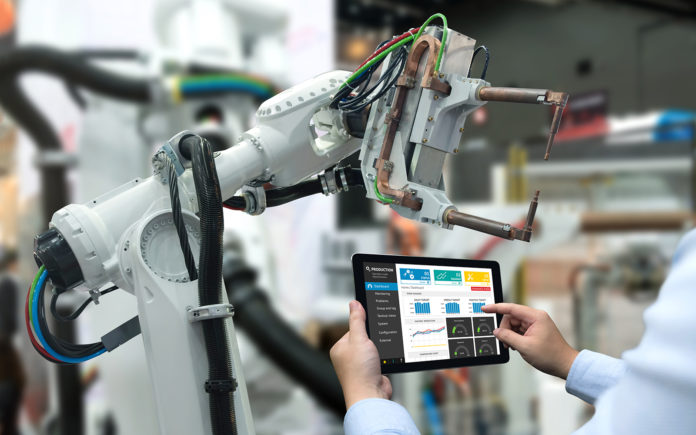Every manufacturing industry has felt the dramatic influence of advancing technologies over the last couple of decades, and the machine manufacturing industry is not exempt. The introduction of internet-based processes and automated solutions have forever shifted machine manufacturing processes. Here we delve into the five most major trends impacting the machine manufacturing world right now, and what to expect in the future.
1. Increased Use of Automation
Far and away, the use of automation is the trend in machinery manufacturing that will have the deepest effect on the industry for the foreseeable future. A wide variety of manufacturing industries have been integrating automation into their products for ease of use, operator safety, and reduced operating costs.
Automation allows businesses to take the guess-work out of quality control because it allows for increased reliability and repeatability. Manufacturers can have more control over their entire operation with automation as it reduces the need for human labor, and therefore human error. Overall, quality goes up, and room for mistakes goes down.
Automation allows for more productivity with around-the-clock work. With the introduction of robotics as a function of automation, machine manufacturing can become a 24/7 operation with fewer costs to the business. Productivity increases even further considering one person can oversee multiple automated systems, allowing for an increased workload.
Automation also increases safety in the manufacturing environment by removing the human operator from having direct contact with dangerous machinery.
2. Bringing More Processes In-House
Along with automation, bringing processes in-house allows for further tightened control over operations. As automation becomes the preferred system for manufacturing, manufacturers will have the ability to increase production while maintaining a small workforce. As the industry looks to prioritize quality and automation, in-house processes are becoming more important. Manufacturers are looking for ways to control more steps in their process and often find that bringing operations in-house allow them to accomplish this. This shift allows manufacturers to avoid long-lead times for items that could potentially delay production and decrease profits. While gaining a competitive advantage and combating supply and demand issues, manufacturers will be able to address their production needs with their own in-house processing solutions.
3. Customization
It is becoming increasingly important to offer customizations and flexibility to meet the ever-changing needs of niche businesses with unique applications. Customers will continue to have quality requirements specific to their industries that machine manufacturers must meet.
For example, the aerospace industry only
accepts parts that are 100% perfect, and requires absolute precision and
quality. The machine manufacturing industry will need to respond to these niche
requirements and will use automation to create highly accurate and
customized products.
4. The Internet of Things
Using the internet to connect multiple devices will enable manufacturers to have a set of networked machines, meaning the machines are connected to one another and use the internet to communicate. This technology provides the ability to remote in and quickly diagnose machine issues without needing physical people to repair. Increased remote capabilities will further improve the operator’s experience. If a machine goes down, the operator will be able to back it up quickly through remote technology and internet-connected machines.
5. The Locality of Parts, Support, and Service
In instances where automation cannot diagnose or repair machine issues, manufacturers will increasingly look to local services and support for parts. Downtime is detrimental to manufacturing, having a source for local support and spare parts is integral to solving machine issues quickly. With localized services, dreaded downtime can be reduced, and production can be back up and running without waiting for long-lead repairs.
These five trends ultimately focus on increasing profits and overall production quantity and quality. As technology continues to evolve, these developments will continue to refine the machine manufacturing industry to become more efficient. Keep your eyes peeled for how automation will contribute to an increasingly competitive market in machine manufacturing.








